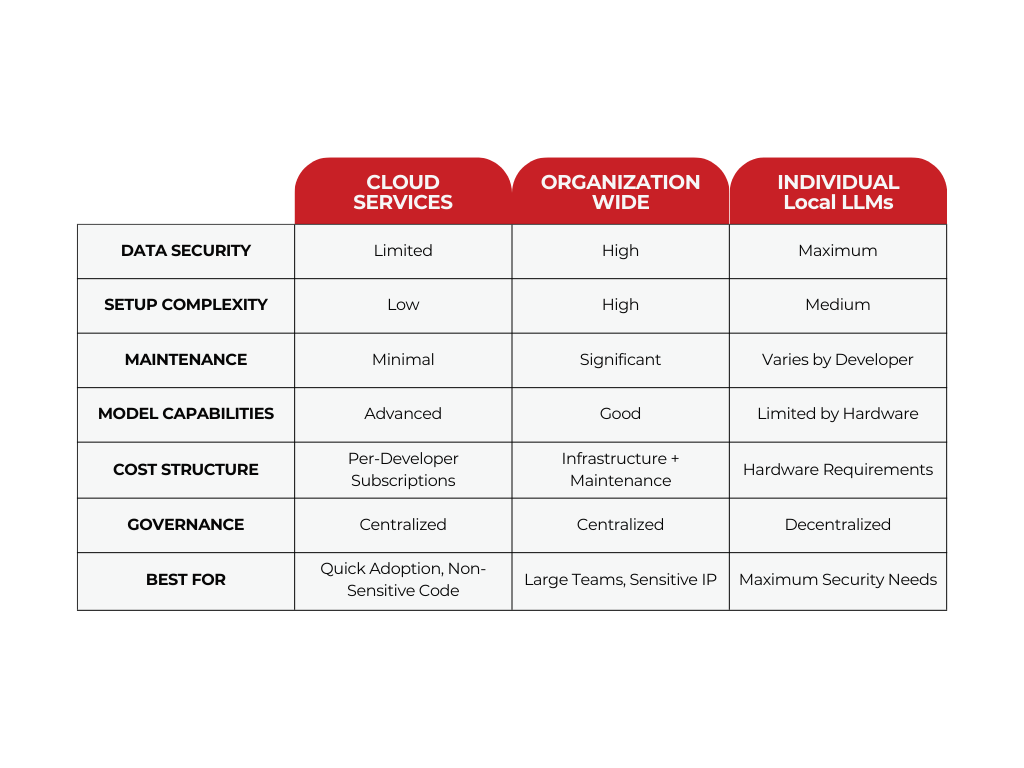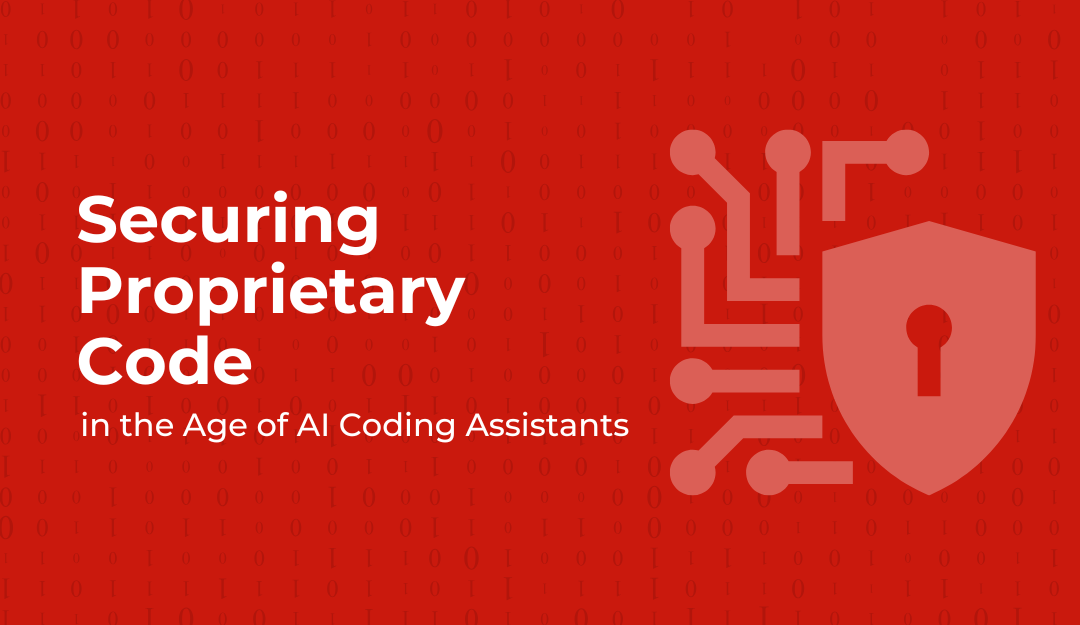AI-powered coding assistants are transforming software development, enabling developers to write code faster, automate tedious tasks, and even generate entire functions with minimal effort. But with these productivity gains comes a critical challenge: How do you protect your proprietary code and intellectual property while leveraging AI?
With AI tools like GitHub Copilot, Amazon CodeWhisperer, and open-source LLMs becoming integral to development workflows, companies must assess where their code goes, how it’s used, and whether it’s vulnerable to leakage or misuse. Let’s explore the risks and the best ways to secure your code while still harnessing the power of AI coding assistants.
The Risks: What’s at Stake?
AI coding assistants work by analyzing patterns in massive datasets—including publicly available code—to generate intelligent suggestions. However, when these tools process proprietary code, they introduce several risks:
- Data leakage – Many AI tools send code to external servers, raising concerns about storage, access, and unintended exposure.
- Model training risks – If your proprietary code is used to train AI models, it could surface in suggestions for other users, potentially exposing trade secrets.
- Competitive vulnerability – Exposed code could weaken your market position, giving competitors insights into your proprietary algorithms.
To mitigate these risks, organizations must carefully choose where AI is deployed and how data is handled. Let’s break down the best approaches.
AI Coding Assistance: Which Approach is Right for You?
Option #1: Cloud-Based AI Coding Assistants
Cloud-based AI tools like GitHub Copilot, Amazon CodeWhisperer, and Google Gemini offer seamless integration with development environments. They’re easy to adopt, continuously improving, and come with enterprise-grade security features.
Pros
- Fast setup and seamless integration
- Always up-to-date with the latest AI models
- Works well across teams with minimal infrastructure requirements
Cons
- Code is processed on external servers (risk of exposure)
- Limited control over how data is used and stored
- Subscription costs can escalate for large teams
Some enterprise solutions offer private repositories and stricter data policies, but this doesn’t guarantee absolute protection. If your organization works with highly sensitive code, relying on cloud-based AI assistants may not be the best option.
Option #2: Organization-Wide Local AI Solutions
Some organizations are turning to self-hosted AI solutions like Tabby, Azure AI, AWS Bedrock, or Vertex AI for greater control. These allow AI-powered coding assistants to run within an organization’s private infrastructure, ensuring that code never leaves a secured environment.
Pros
- Proprietary code stays within company-controlled infrastructure
- Centralized security and compliance controls
- Ability to customize and fine-tune AI models
Cons
- Requires significant setup and maintenance
- Higher operational costs (server provisioning, software updates)
- May require additional AI expertise to manage and optimize
This option is ideal for larger teams handling sensitive IP that need to balance AI efficiency with security and compliance.
Option #3: Local AI Coding Assistants on Developer Machines
Individual developers can run AI models entirely on their local machines for maximum security, using tools like Llama Coder, GPT4All, Continue, and Tabby. This ensures that no code is ever transmitted externally.
Pros
- Absolute data isolation—code never leaves the device
- No reliance on external cloud providers
- Developers can fine-tune their AI models locally
Cons
- Requires high-performance hardware (GPUs for larger models)
- Limited AI model capabilities compared to cloud-based tools
- Decentralized approach can lead to inconsistencies across teams
This method is best suited for organizations with strict security requirements or developers working on highly confidential projects.
AI Code Assistant Comparison Table

Best Practices for Securing AI Coding Assistance
Regardless of which option you choose, security should always be a priority. Implement these safeguards to minimize risks:
- Network Isolation – Separate development environments from external networks for high-security projects.
- Model Selection – Use AI models with transparent data policies and clear privacy terms.
- Prompt Engineering – Train developers to avoid including sensitive data in AI prompts.
- Usage Monitoring – Implement logging and monitoring to track AI interactions and detect anomalies.
- Developer Training – Educate teams on secure AI usage, potential risks, and best practices.
Choosing the Right AI Coding Strategy
AI coding assistants are here to stay and can supercharge development workflows. But security remains a top concern, especially for teams handling proprietary code.
- For teams working with non-sensitive code, cloud-based AI tools provide the easiest and most efficient path.
- For organizations dealing with proprietary IP, self-hosted AI solutions strike a balance between security and usability.
- For maximum security, local AI coding assistants ensure complete data isolation but come with hardware limitations.
The right choice depends on your team’s needs, risk tolerance, and available resources. By implementing the right security measures, organizations can confidently leverage AI coding assistants, and they can do so without compromising their most valuable asset: their code.
Need Guidance on AI Strategy?
At RBA, we help businesses navigate AI adoption and enterprise technology solutions. Whether you’re exploring AI coding assistants, optimizing development workflows, or strengthening security protocols, our consultants can help.
Let’s build a secure and AI-powered future, together. Get in touch today!

